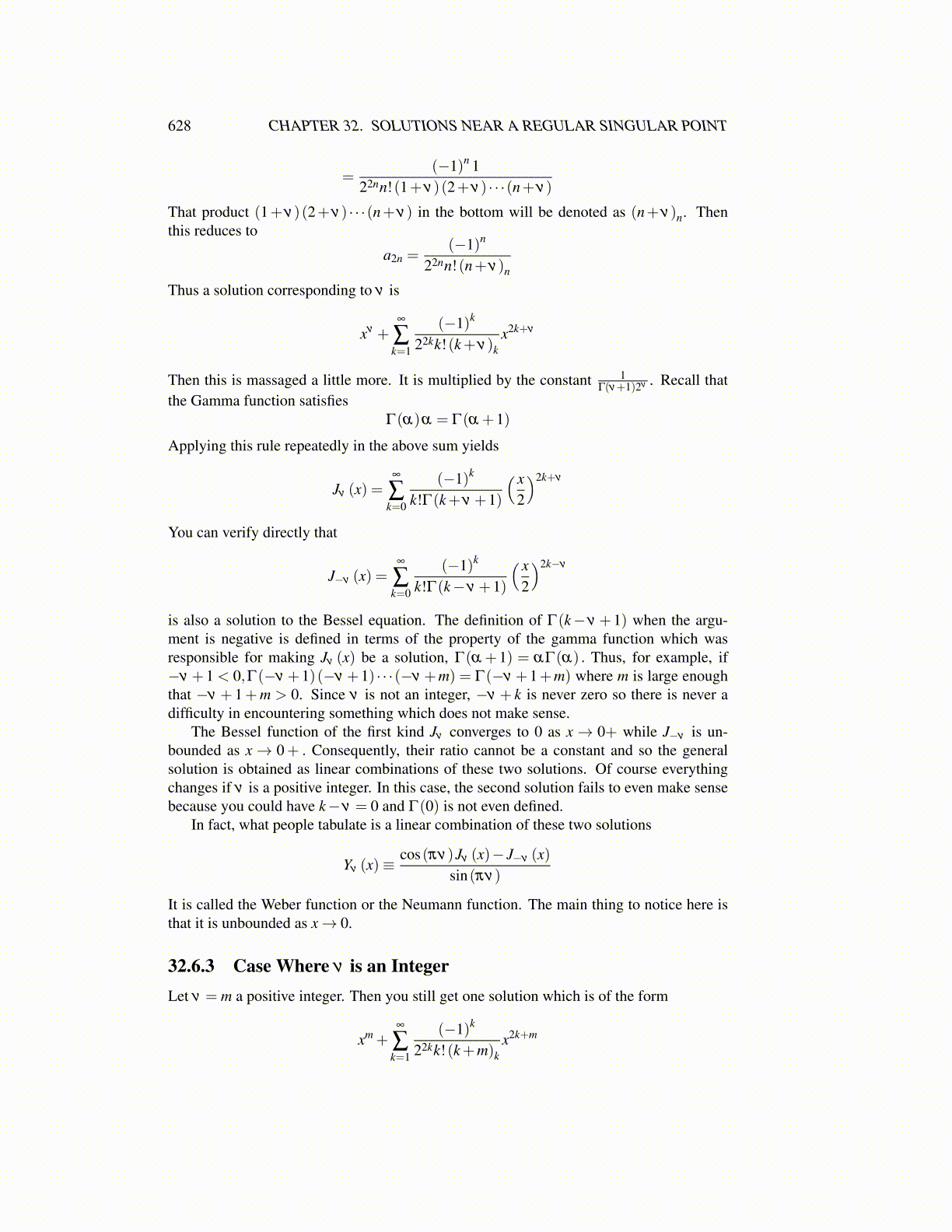
628 CHAPTER 32. SOLUTIONS NEAR A REGULAR SINGULAR POINT
=(−1)n 1
22nn!(1+ν)(2+ν) · · ·(n+ν)
That product (1+ν)(2+ν) · · ·(n+ν) in the bottom will be denoted as (n+ν)n. Thenthis reduces to
a2n =(−1)n
22nn!(n+ν)n
Thus a solution corresponding to ν is
xν +∞
∑k=1
(−1)k
22kk!(k+ν)kx2k+ν
Then this is massaged a little more. It is multiplied by the constant 1Γ(ν+1)2ν . Recall that
the Gamma function satisfiesΓ(α)α = Γ(α +1)
Applying this rule repeatedly in the above sum yields
Jν (x) =∞
∑k=0
(−1)k
k!Γ(k+ν +1)
( x2
)2k+ν
You can verify directly that
J−ν (x) =∞
∑k=0
(−1)k
k!Γ(k−ν +1)
( x2
)2k−ν
is also a solution to the Bessel equation. The definition of Γ(k−ν +1) when the argu-ment is negative is defined in terms of the property of the gamma function which wasresponsible for making Jν (x) be a solution, Γ(α +1) = αΓ(α) . Thus, for example, if−ν +1 < 0,Γ(−ν +1)(−ν +1) · · ·(−ν +m) = Γ(−ν +1+m) where m is large enoughthat −ν + 1+m > 0. Since ν is not an integer, −ν + k is never zero so there is never adifficulty in encountering something which does not make sense.
The Bessel function of the first kind Jν converges to 0 as x→ 0+ while J−ν is un-bounded as x→ 0+ . Consequently, their ratio cannot be a constant and so the generalsolution is obtained as linear combinations of these two solutions. Of course everythingchanges if ν is a positive integer. In this case, the second solution fails to even make sensebecause you could have k−ν = 0 and Γ(0) is not even defined.
In fact, what people tabulate is a linear combination of these two solutions
Yν (x)≡cos(πν)Jν (x)− J−ν (x)
sin(πν)
It is called the Weber function or the Neumann function. The main thing to notice here isthat it is unbounded as x→ 0.
32.6.3 Case Where ν is an IntegerLet ν = m a positive integer. Then you still get one solution which is of the form
xm +∞
∑k=1
(−1)k
22kk!(k+m)kx2k+m